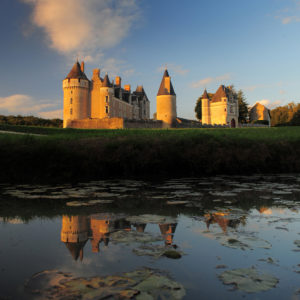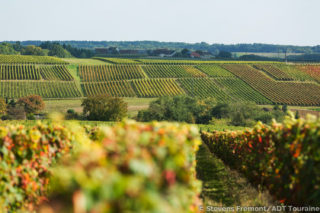Loire Valley Wines Come Clean
Chapter Sixteen. Part Eleven.

© 2014 Léonard de Serre, ADT Touraine
In my last article (and by article I mean rant) I wrote about the popularity of “formulaic recipe wines that use additives and sugar to add weight and mask off flavors”, but today I’m here to tell you there are many wine regions where the dry wine “recipe” does not include residual sugar or the additive mega-purple.
For years families in the Loire Valley have been crafting honest wines using techniques passed down from generation to generation. This vast French wine region surrounds the Loire River as it stretches westward for over 600 miles from its source in the Massif Central to its mouth at the Atlantic Ocean. This lengthy waterway may pale in comparison to the mighty Amazon River but on the bright side the French don’t have to fend off man-eating piranhas.
The vineyards of the Loire were first planted by the Romans and managed through the centuries by the church. It was smooth sailing for the Loire wine trade until late in the 19th century when the phylloxera epidemic decimated its vineyards and took the wind out of its sales.
Over the past century Loire Valley wines have suffered the slings and arrows of indifferent consumers, resulting in low prices for those without outrageous fortune. Today the total acreage under vine is a fraction of what it once was but post-phylloxera vineyard planting has resulted in a movement towards better quality wines and consumers are now recognizing the relative value in the 250 million bottles that flow from this region every year.
Some of the names – Muscadet, Vouvray, Sancerre, and Pouilly-Fume – are probably familiar to you. Others such as Anjou, Saumur, Savennières, Bourgueil, and Chinon are burgeoning regions that will undoubtedly be household names soon, provided your household is in Anjou, Saumur, Savennières, Bourgueil, or Chinon.

©2014 Stevens Frémont, ADT Touraine/Interloire
The Loire Valley is best known for producing crisp, clean white wines free from oak aging and malolactic fermentation; however reds, rosés and sparkling wines are also produced from roughly 20 different grape varieties in nearly 90 distinctive appellations.
There are two broad appellations that apply to any region in the valley. Vin de Pays du Val du Loire, applies to varietal wines made outside the more prestigious areas designated Appellation d’Origine Contrôlée (AOC), also known as Appellation Contrôlée (AC). The second, AOC Crémant de Loire, refers to sparkling wines made in the traditional Champagne method and is focused predominately in Anjou and Saumur.
The Crémant de Loire appellation is second only to Champagne in sparkling wine output. Here you will often find Chardonnay blended with Chenin Blanc but several other varieties are permitted, including the black grapes Pinot Noir, Cabernet Franc, and even Cabernet Sauvignon.
There are also five individual appellations for Mousseux (French for fully sparkling) and six for Pétillant (semi-sparkling) located in Anjou, Saumur, and Touraine. Mousseux may be produced in in the traditional Méthode Champenoise or in the bulk Charmat method. With the Charmat method the secondary fermentation – the one that creates all those bubbles – takes place in large tanks and the wine is then transferred into the bottle, rather than occurring inside the individual bottles as it does in the Méthode Champenoise.
In upcoming posts I’ll delve deeper into the other Loire Valley appellations and what kind of wine you can expect from each. What you should not expect from the Loire Valley are homogenous wine lampoons that have been manipulated beyond recognition. Minimalist winemaking is still in fashion here, despite the insatiable sweet tooth of American millennials. For clean, dry, expressive wines, look to the wines of the Loire Valley; you’ll discover wines that showcase the distinctive terroir of the region and the soul of the vignerons who have worked these fields for centuries.





















Information like this about wines will help consumers understand the wine industry and how and where they can be able to get the best wines that are safe to drink and in which they can add to their own collection too. Thanks for sharing this one.